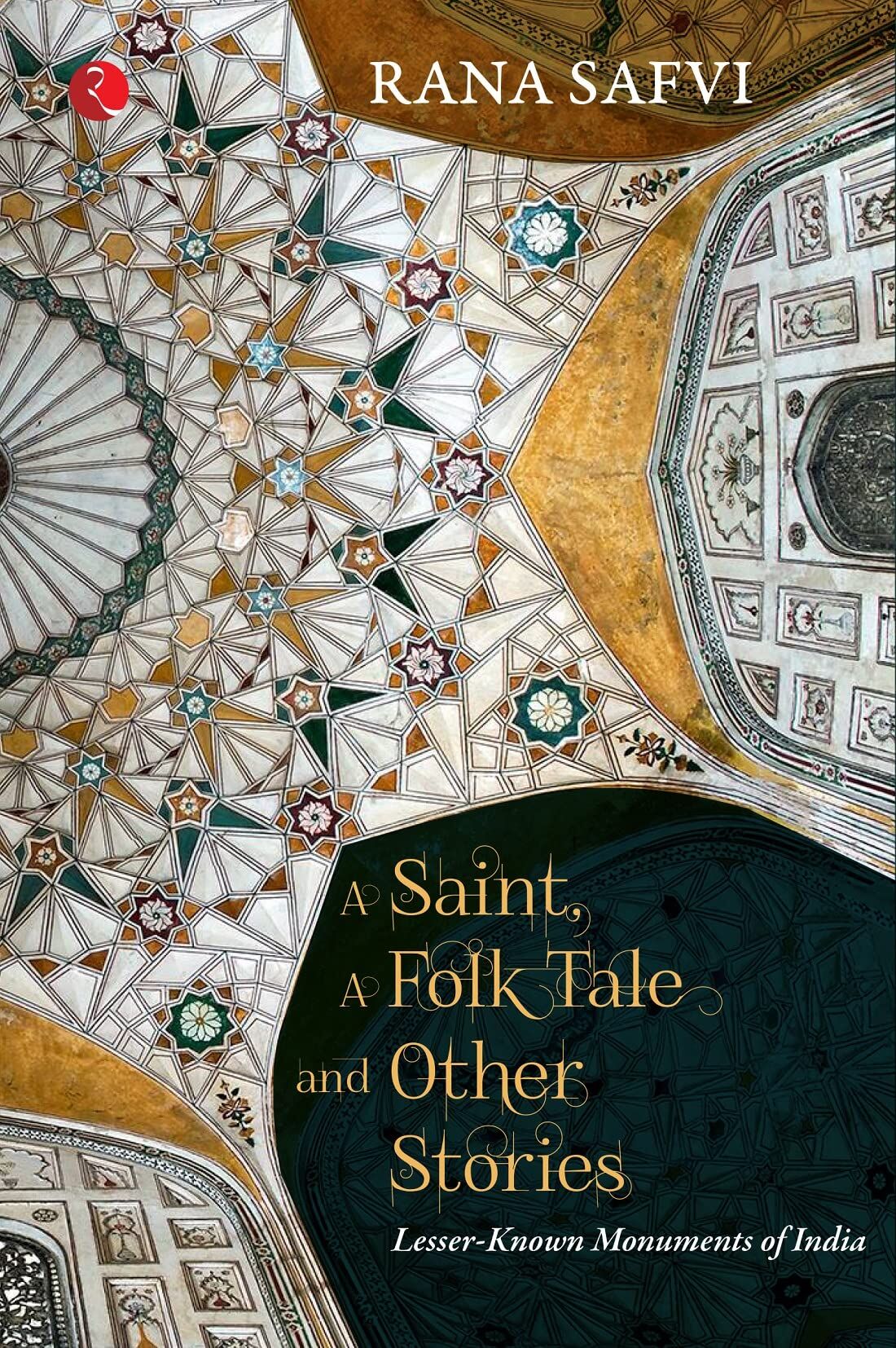A glimpse into the past
Rana Safvi's book, 'A Saint, A Folk Tale and Other Stories', is a seamless reconstruction of history around once-glorious architectures of India, made possible through layers of in-depth citations from credible documents and paintings, knowledge of locals and, interestingly, even myths and folktales

Monuments and historical architecture are surrounded by a distinct air of their own. Every single construction from the past is, in a way, alive — breathing in its own space and telling its own stories, in a language of mysterious silence. Being strangers to that language, most among us find ourselves blanked somewhere inside our inner conscience — in filling the telling pauses of time and space, in comprehending the stories these eternal monuments have been witness to and are desperate to tell. Though we feel something on our skin, we fail to accord a meaning and structure to these hidden narrations.
Rana Safvi's book, to a certain extent, provides readers with the required handholding to get out of this quagmire. Rana, who calls herself the adopted daughter of Delhi, has chronicled the stories of some well-known, and more lesser-known architectures across the length and breadth of the country. The book chronicles 20 monuments in as many chapters but every single saga is intertwined with snippets, anecdotes and mentions around other relatable or comparable monuments — creating a web of knowledge and intrigue that is worth being trapped into.
One must not err to presume the book to be crudely descriptive. While Rana's acquired knowledge, deep research and credible citations may be of utter delight to an architecture student, the anecdotes, and even myths followed by subtle busting are enlightening and intriguing for a commoner who would have visited one or several of these structures in her lifetime.
There is a similarity of pattern in which each chapter is constructed. Starting with a cliché or commonly known fact, presented in the simplest form possible, Rana then starts adding layers after layers — bringing in subtle complexities in a sequence that simplifies the entire narrative. Different layers carry a distinct flavour of their own. Lending credibility to the book are long quoted paragraphs from most trusted historians. For instance, enquiring into how Delhi was named as such, Rana first presents the versions of numerous historians and then, putting herself last in the sequence, gives her own side of the story as well — leaving it to readers to construct an understanding of their own, or sometimes, leaving an air of uncertainty where it is hard to arrive at any conclusion! Then again, the indecision of that grey area has a truth of its own!
Another layer is of myths and fables that have been there in folklore. Despite being a historian, Rana dares to give these folklores ample space in her book, perhaps with the conviction that 'stories' need to be presented as 'stories'.
The expanse of architecture covered is substantially diverse — from covering the wooden architecture of Srinagar in the north to the rock-cut architecture of Andhra in the south.
The beauty of the narration is that it is devoid of any fancy. Seamlessly switching between first person and third person, the writer moulds herself as an interface — an interface between the present and the past, and between the known and unknown. As someone who appears to be equally familiar with the ins and outs of historical dynasties and the characters in present who inhabit the areas surrounding the architecture, Rana effortlessly vacillates between the two.
Starting from scratch, the narrator fills the entire landscape by adding layers after layers — of her knowledge, of existing documentation, of what the locals have to say and of the portraits painted by artists in the past. The culmination is a wholesome picture — which, of course, may be susceptible to the biases of the writer and her very own impression. But the picture contains countless elements of truth. These pictures tell both the stories of grandeur and humility of the past.
And then, suddenly, the narration would jump into the present, for the writer must also tell the stories of ruining and abandonment of India's grand architectures, and of the neglect as well. Conservation is a recurring theme in the book that organically keeps propping across chapters.
The book allows readers a meandering experience in the wilderness called past, with the bright light of author's understanding filtering through many diverse canopies of Indian architecture. This leaves a fair bit of scope for digressions as well — wanted or unwanted, is to be decided by the readers themselves. Attempt to escape biases is visible throughout the book which, at times, is apparently counterbalanced by writer's own convictions. However, the extent of conviction of any writer desired in a book dealing with history is an open-ended question.
'A Saint, A Folk Tale and Other Stories' is worth reading for those who find themselves curiously blank while visiting Indian architecture, and tempting enough for those who rarely reach out for architectural monuments. With a rare and painstaking theme, the book is an endeavour towards making architecture a commonplace, in which it succeeds.
The 241-page book also includes acknowledgement, an impressively extensive bibliography, explanation of local contemporary terms and, most importantly, travel advice regarding particular sites for the readers who can't resist venturing out after reading the book!
Views expressed are personal



